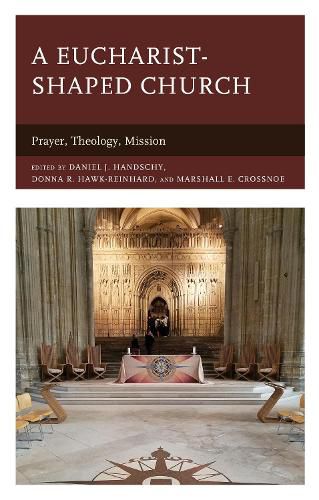Readings Newsletter
Become a Readings Member to make your shopping experience even easier.
Sign in or sign up for free!
You’re not far away from qualifying for FREE standard shipping within Australia
You’ve qualified for FREE standard shipping within Australia
The cart is loading…






A Eucharist-shaped Church: Prayer, Theology, Mission is a historical-theological survey of major movements and thinkers that have shaped sacramental theology and liturgical worship within the Anglican/Episcopal tradition. The contributors attend closely to the interplay between Christian thinking, praying, and living in order to distil lessons for liturgical revision and worship renewal. Each chapter explores a major thinker or movement, and explores how the theological, liturgical, ecclesiological, and missiological commitments of the thinker or movement interacted and shaped the thinker’s or movement’s overall thought. This serves a two-fold purpose: 1.) Much scholarship about Anglican eucharistic theology treats some aspect of that theology in isolation (presence, sacrifice, etc.) from other aspects, and from the context in which the theology was developed. This approach shows how these various aspects and contexts in fact have mutual explanatory power. 2.) The interaction of these various aspects of eucharistic theology provide a framework for those involved in liturgical revision to think through the commitments communicated by the proposed revisions.
$9.00 standard shipping within Australia
FREE standard shipping within Australia for orders over $100.00
Express & International shipping calculated at checkout
A Eucharist-shaped Church: Prayer, Theology, Mission is a historical-theological survey of major movements and thinkers that have shaped sacramental theology and liturgical worship within the Anglican/Episcopal tradition. The contributors attend closely to the interplay between Christian thinking, praying, and living in order to distil lessons for liturgical revision and worship renewal. Each chapter explores a major thinker or movement, and explores how the theological, liturgical, ecclesiological, and missiological commitments of the thinker or movement interacted and shaped the thinker’s or movement’s overall thought. This serves a two-fold purpose: 1.) Much scholarship about Anglican eucharistic theology treats some aspect of that theology in isolation (presence, sacrifice, etc.) from other aspects, and from the context in which the theology was developed. This approach shows how these various aspects and contexts in fact have mutual explanatory power. 2.) The interaction of these various aspects of eucharistic theology provide a framework for those involved in liturgical revision to think through the commitments communicated by the proposed revisions.